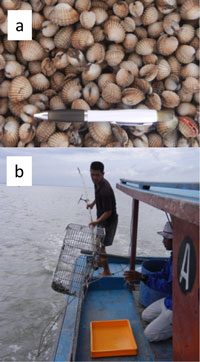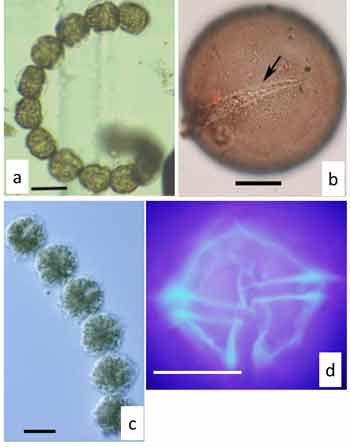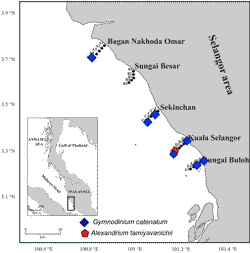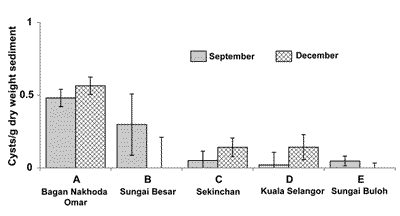Occurrence of causative dinoflagellates of paralytic shellfish poisoning in Selangor coast, Peninsular Malaysia
Description
The blood cockle, Anadara granosa (Fig. 1a), is an important shellfish aquaculture species in Southeast Asia. In Peninsular Malaysia, the center of cockle culture is in Selangor coast, where huge, suitable mud flat habitats are extensive (Fig. 1b). The spats occur in high density throughout the region, for export to neighboring countries as culture seeds as well as for domestic culture.
In recent years, causative dinoflagellates of paralytic shellfish poisoning have been spreading in Southeast Asia, and have become a serious problem to bivalve culture activities. Toxification of bivalves has resulted to big economic losses due to regulations on aquaculture shipping as well as food safety. The main purpose of this study, therefore, is to collect useful knowledge for the future management of cockle fisheries in Selangor coast, by conducting habitat status and distribution surveys for causative dinoflagellates of paralytic shellfish poisoning.
Between January to May 2012, surveys were carried out in wide areas of Selangor coast using plankton nets (mesh size 20μm). Two causative species of paralytic shellfish poisoning, Gymnodinium catenatum (Fig. 2a) and Alexandrium tamiyavanichii (Fig. 2c, 2d), were detected in the plankton samples. It was evidently clear that the distribution of G. catenatum vegetative cells is wide at a 100-km stretch along Selangor coast, from north to south (Fig. 3). The resting cysts, G. catenatum, were observed in surface sediment samples (0-2cm) taken by a sediment corer in Selangor coast (Fig. 2b). Sample density was especially high in the northern part, averaging about 0.5 cells/g dried mud (Fig. 4).
Future collaboration with the Malaysian government will focus on the establishment of a monitoring system to detect paralytic shellfish poisoning including the conduct of toxicity analysis in blood cockle. The presence of causative dinoflagellates in the culture grounds will be examined in order to improve food safety of the cultured shells. This monitoring system should enhance stabilization of the cockle culture industry in the region. Local and foreign shipments of the cockle spats, from Selangor coast into other coastal waters, can be a diffusion factor for the resting cysts, and may result to the spread of paralytic shellfish poisoning in Southeast Asia. As part of its future activities toward effective fisheries management, transportation of spats to other culture grounds must take into consideration the diffusion of the resting cysts.
Figure, table
- Affiliation
-
Japan International Research Center for Agricultural Sciences Fisheries Division
- Classification
-
Administration B
- Research project
- Program name
- Term of research
-
FY 2011
- Responsible researcher
-
Yurimoto Tatsuya ( Fisheries Division )
Bin Ayub Mohd Nor Azman ( Fisheries Research Institute, Malaysia )
Takada Yoshinobu ( Shin Nihon Kentei Kyokai )
Kodama Masaaki ( University of Tokyo )
Matsuoka Kazumi ( Nagasaki University )
KAKEN Researcher No.: 00047416 - ほか
- Publication, etc.
-
Su-Myat et al. (2012) Malaysian Fisheries Journal, 11: 32-41
- Japanese PDF
-
2012_25_A4_ja.pdf63.87 KB
- English PDF
-
2012_25_A4_en.pdf124.79 KB




